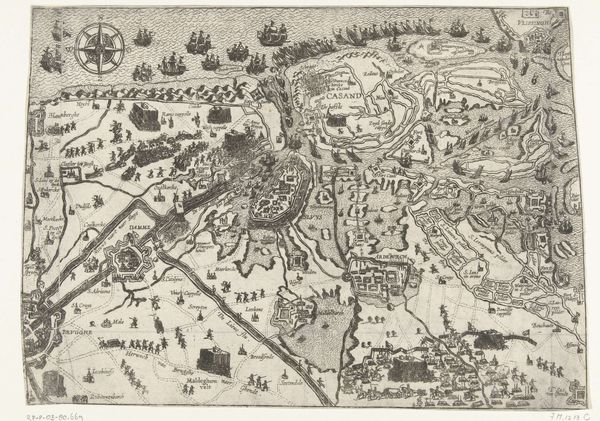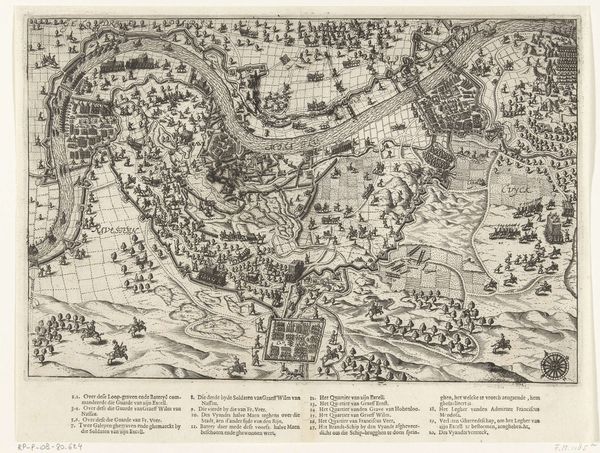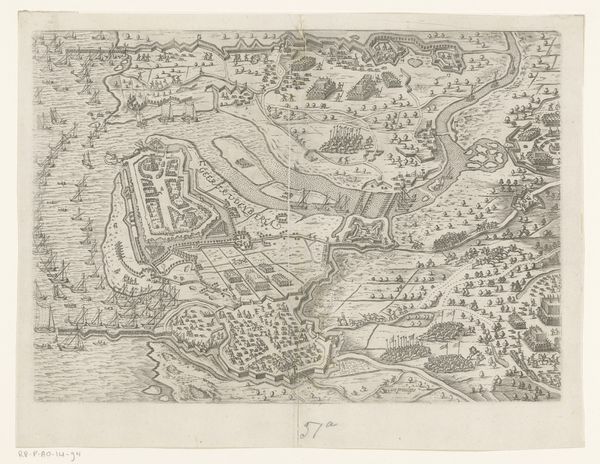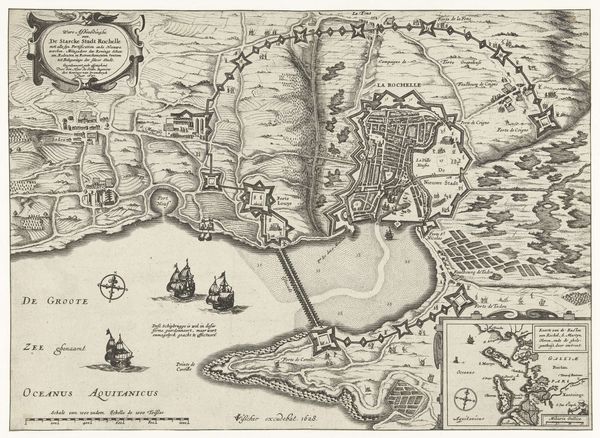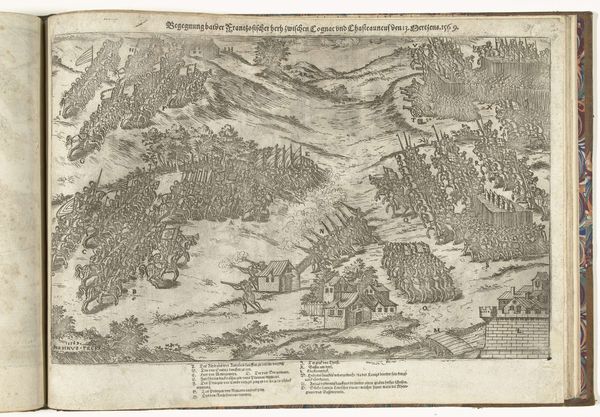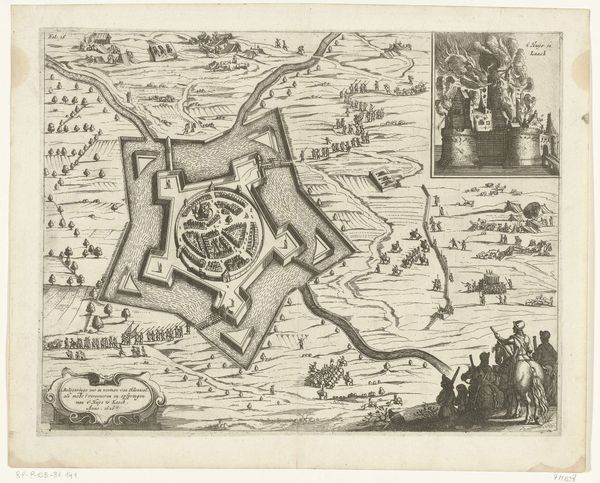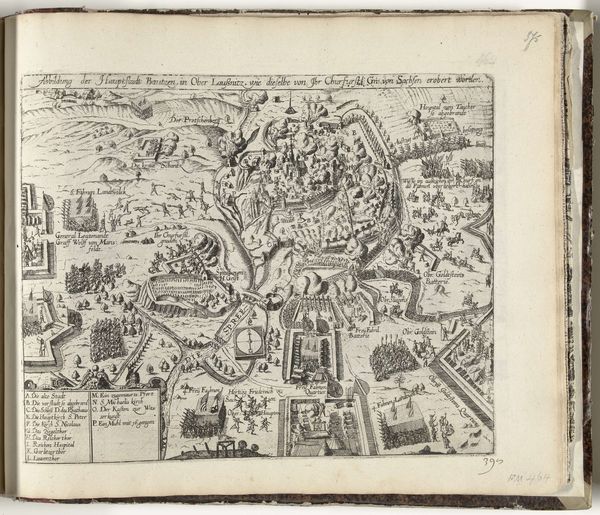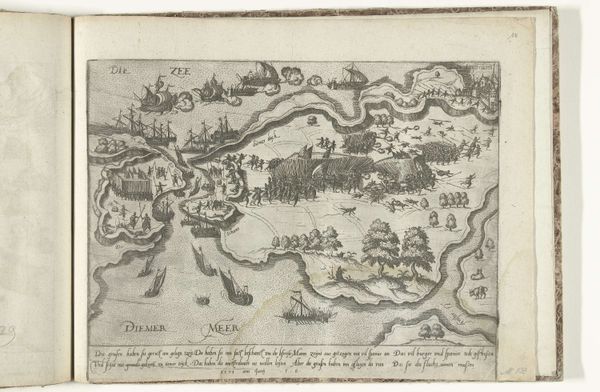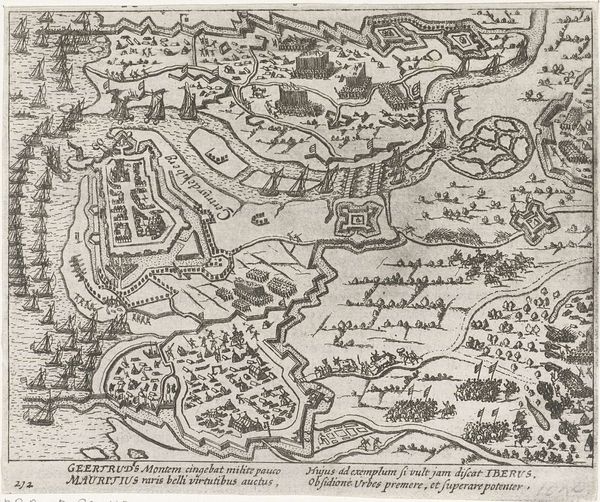
print, engraving
#
baroque
#
pen drawing
# print
#
pen illustration
#
pen sketch
#
old engraving style
#
landscape
#
ink line art
#
geometric
#
line
#
cityscape
#
engraving
Dimensions: height 274 mm, width 350 mm
Copyright: Rijks Museum: Open Domain
Editor: Here we have "Kaart van het beleg van La Rochelle, 1627-1628," an engraving from between 1627 and 1629, found at the Rijksmuseum and created by an anonymous artist. It's quite detailed, but has an oppressive feel, maybe from the density of the lines illustrating the siege. What do you see when you look at it? Curator: This map isn't just a depiction of a place; it's a representation of power dynamics and religious conflict during the siege of La Rochelle. It highlights the siege of La Rochelle (1627-1628), a key event in the suppression of the Huguenots – French Protestants – by the Catholic monarchy. Look at how the city is surrounded, almost strangled, by fortifications. What does that visual language communicate about the position of the Huguenots within the French Kingdom? Editor: It feels very unequal, very controlled. They're completely surrounded and isolated. The ships on the water seem to emphasize their disconnection from everything. Curator: Precisely. And who commissioned this map, do you think? What purpose did it serve beyond mere cartography? Was it, perhaps, a form of propaganda, aimed at legitimizing the monarchy's actions and demonizing those seen as dissidents? Consider the history of marginalized religious and ethnic groups. How do those narratives echo through such depictions of conflict and control? Editor: I hadn't thought about it that way, but the amount of detail on the attacking forces versus the city could support that idea. There is certainly more attention and detail to their structures. It seems to paint the attackers as organized and powerful and minimizes those in La Rochelle. I suppose I saw it just as a drawing, when it may have served a strong political purpose! Curator: Exactly! Art is rarely neutral; it reflects and reinforces the power structures of its time. The map then isn't only Baroque artistry, or cityscape style, it is a forceful argument that transcends the purely visual, telling us so much about politics. Editor: Thank you! I definitely learned something new about reading beyond the surface of a historical work.
Comments
No comments
Be the first to comment and join the conversation on the ultimate creative platform.
